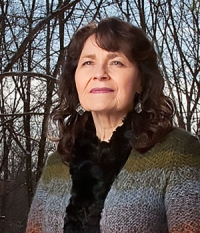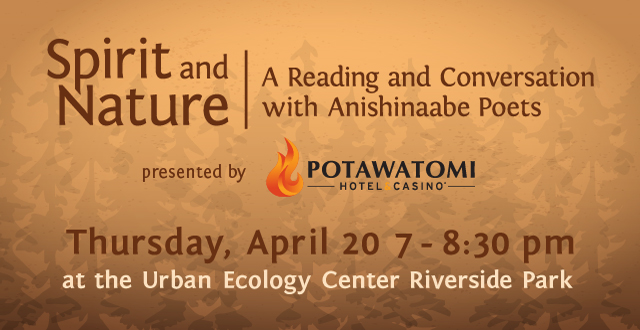For example, do we make our world or was it made and delivered to us, once and for all? Are we watchers as the future unfolds or empowered workers? As we evaluate the day-to-day relationships twenty-first century Americans have with the natural world, we might do well to consider the origins of our actions or inaction. How do the stories we hear and tell impact how we see the universe, and how does that way of seeing impact the way we engage with the world around us? The way we see creates the way we will "be" in the world. To learn another way of being, learn another way of seeing.
Guest author Kimberly Blaeser served as Wisconsin's Poet Laureate from 2015 to 2016. She joins fellow authors Denise Sweet (Wisconsin Poet Laureate 2005-2008) and Margaret Noodin Thursday, April 20 as part of Spirit and Nature: A Reading with Anishinaabe Poets at the Center's Riverside Park branch.
Our mythic accounts, our sacred stories, and our literary metaphors, create the lens through which we will encounter the natural world, and thus they influence our relationship to it. Among Native people, we tell a story of this earth on Turtle’s back, the creation of this good land coming about through the cooperation and courageous acts of all beings, non-humans chief among them. Our sustenance, too, we believe involves the non-hierarchical community of beings. Aninaatig, the maple, no less than makwa, the bear. Aamoo, the bee, no less than the odéimin, the strawberry.
Anishinaabeg stories and poems work to build an-other kind of understanding of place-centered reality—an-other way of "being" in the world. Harmony together with humor. Less capitalism, more community economy. Building on mythic, spiritual, historical, and cultural foundations, the land languages we speak, and our earth writing, the work of Indigenous authors comes off the page and invites us all to imagine anew the lives and creatures of our natural communities—from rice to river otters, tree bark to turtles, humans to herons. We invite you to come and hear how Anishinaabeg stories, poems, and artwork might attest to and enact different ethical understandings of eco-reality.
Imagine if you knew and lived an-other story, the layered entwined existence of mino-bimaadizi and reciprocity. In 2017, how will you story water? How will you story survival?
Kim Blaeser, author of Apprenticed to Justice






